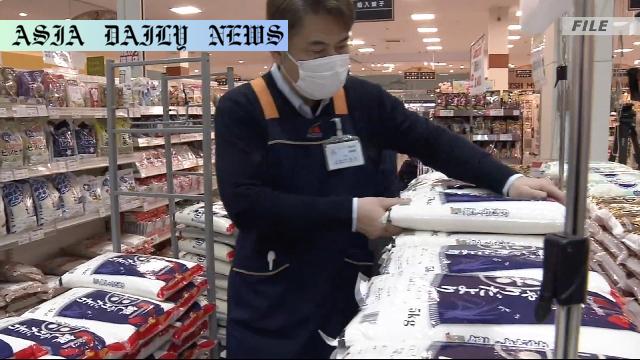Rice auction: Nearly 30 percent of rice auctioned from government stockpiles has successfully reached retailers and restaurants.
Japan auctioned 312,000 tons of rice to stabilize prices.
Approximately 30% or 92,000 tons reached retailers and restaurants.
16,000 tons were sold through no-bid contracts, with 1,900 tons hitting supermarket shelves by June 8.

Government Auctions and Stockpiles to Address Supply Challenges
In an effort to stabilize the domestic rice market, Japan’s agriculture ministry auctioned an impressive 312,000 tons of rice from its government stockpile between March and April. The auctioning process aimed to address escalating rice prices by increasing the supply through public bidding and no-bid contracts. The ministry’s efforts underline the government’s proactive approach to managing food security and affordability during a time of fluctuating agricultural commodity prices. While around 159,000 tons have been shipped to wholesalers by June 8, only about 92,000 tons, or nearly 30 percent, have successfully reached retailers and restaurants.
The disparity in distribution raises questions about the efficiency of the system in ensuring equitable access throughout the supply chain. Nevertheless, this data provides a glimpse into the effectiveness of the ministry’s measures, especially given that the ultimate goal is not merely auctioning rice but delivering it to points where consumer demands and affordability intersect. It reflects a continued emphasis on local food security policies, a matter that holds critical importance amidst global disruptions in agricultural production.
Ensuring Retail Accessibility Through No-Bid Contracts
Although traditional auctions formed the cornerstone of these efforts, the agriculture ministry also introduced no-bid rice sales as an additional strategy. A smaller but significant 16,000 tons of rice were sold specifically to retailers through such contracts. However, as of June 8, just over 1,900 tons of this portion had reached supermarket shelves.
This delayed distribution highlights a logistical bottleneck within the supply chain, which could compromise the ministry’s broader objectives. Despite these challenges, the initiative to direct resources into the retail sector indicated an effort to cap price surges for consumers directly. Public awareness campaigns and further investments in improving distribution channels may be required to ensure that such interventions achieve the desired economic results faster.
Impacts on Pricing and Broader Implications
The surge in auctioning activities by the ministry evidently seeks to balance supply and demand for rice amid increasing prices. While 30 percent of the rice reaching retailers and restaurants is a step forward, there is significant room for optimizing the system to enhance broader accessibility.
By focusing on equitable distribution, comprehensive supply chain efficiencies, and increasing awareness about market adjustments, Japan may set a precedent for other nations seeking to address similar economic challenges. Amid prevailing fluctuations in global food prices, such proactive government measures play an instrumental role in ensuring economic stability and meeting public demands effectively.



Commentary
Commendable Steps to Regulate Rice Prices Amid Market Fluctuations
Japan’s agriculture ministry deserves recognition for its proactive measure of auctioning government stockpiles of rice to address rising prices. At a time when global food prices are highly volatile, such interventions are crucial in maintaining stability in domestic markets. This strategy not only helps to balance supply and demand but also safeguards the interests of consumers, retailers, and other stakeholders.
Addressing Distribution Challenges
While auctioning 312,000 tons of rice is an impressive feat, the fact that only 30 percent of it has reached retailers and restaurants reveals a clear gap in the distribution chain. Such bottlenecks highlight the importance of reviewing logistic efficiencies to ensure that consumers benefit from government-driven initiatives promptly. The delay between auctioning and delivery is an area where improvement could make a substantial difference.
Lessons for Future Food Security Policies
Japan’s efforts set an example for governments worldwide about managing food security amid economic uncertainties. By combining auctions and no-bid contracts, the ministry has demonstrated a willingness to experiment with mixed approaches. However, it is also a reminder of the complexity underlying food distribution systems, especially in densely populated areas like Japan. Persistent efforts, collaboration with local agencies, and the adoption of technology for streamlined supply chains could amplify the impact of such initiatives.
As global food challenges grow, strategies like these hold the potential to shape the future of agricultural policies in a positive and sustainable direction. Viewing these developments through a lens of continuous learning and improvement bodes well not only for Japan but for other economies facing similar challenges.